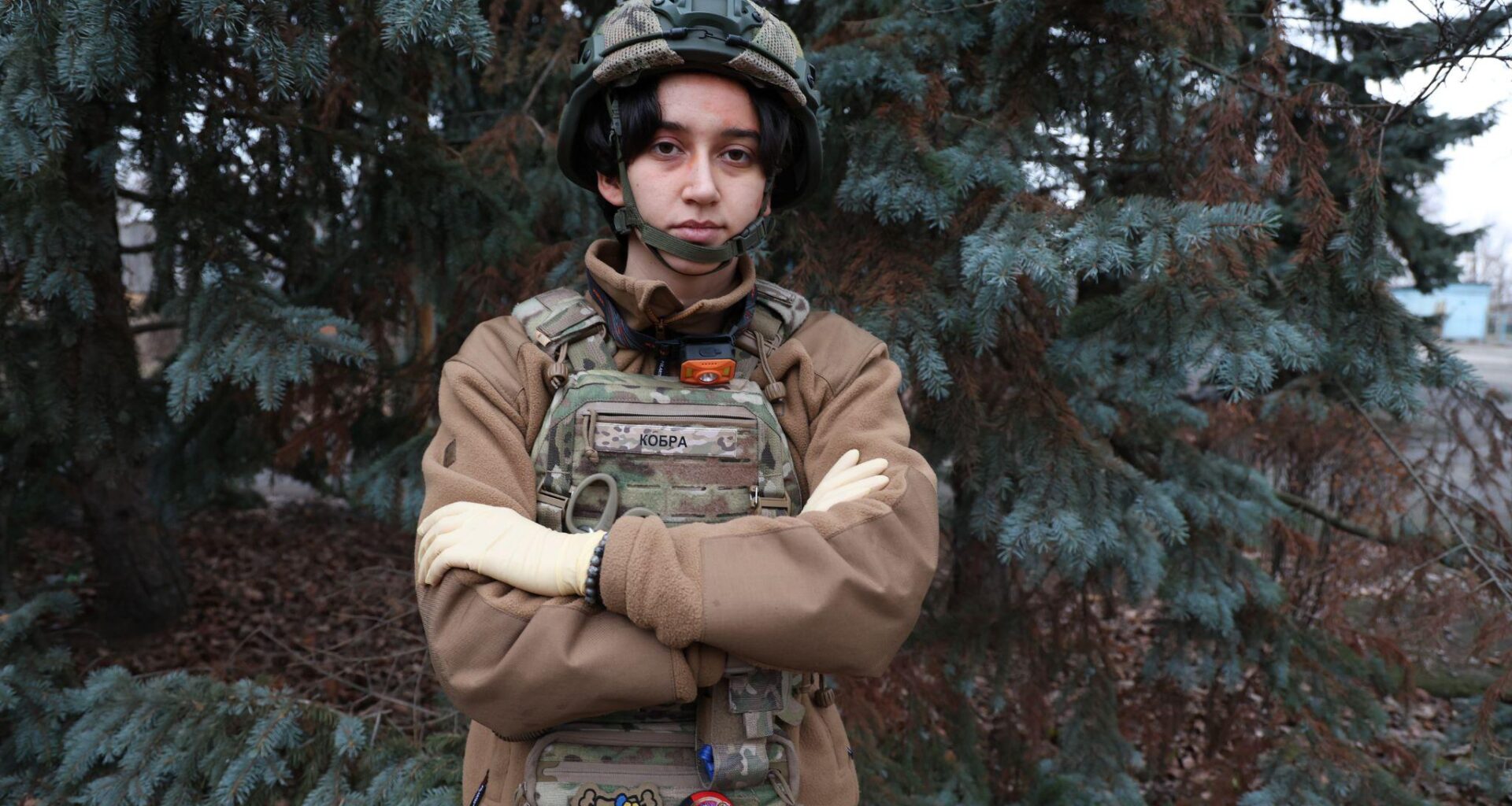“People continue going to the front because they feel they must. You understand — if not you, if not now — then what happened in Bucha could happen in my hometown.”
In a calm but resolute voice, 24-year-old Karolina, known by her callsign "Cobra," shares her life story while nervously awaiting the results of her volunteer paramedic certification exam.
"I lived in Italy for more than nine years," she says, adjusting the snake-shaped ring that earned her nickname. "I was 13 when I joined my mom there, but I always felt depressed and sad in Italy. I missed my homeland deeply and always wanted to go back."
Karolina returned to Ukraine in December 2021, just months before the full-scale invasion, as rumors and warnings of a possible Russian attack grew louder. With schools still largely operating online, she decided that if she was to continue her virtual studies, she would do so from Ukraine.
"I felt it was my mission to help fight for Ukraine and show the world what’s happening here," she said.
Just three months later, Putin’s full-scale invasion of Ukraine gave Karina her chance. Armed with her language skills and experience in both Ukraine and Italy, she stepped into the role of a local producer for Italian news outlets in April 2022, guiding them to frontline stories across the war zone.
But as the war ground on and global attention shifted — most notably during the Israel-Hamas war — Karina felt the spotlight dim. With it, so did her sense of making a real impact.
"I started looking for something more meaningful, something where I could save lives directly. That’s when I turned to tactical medicine," she says.
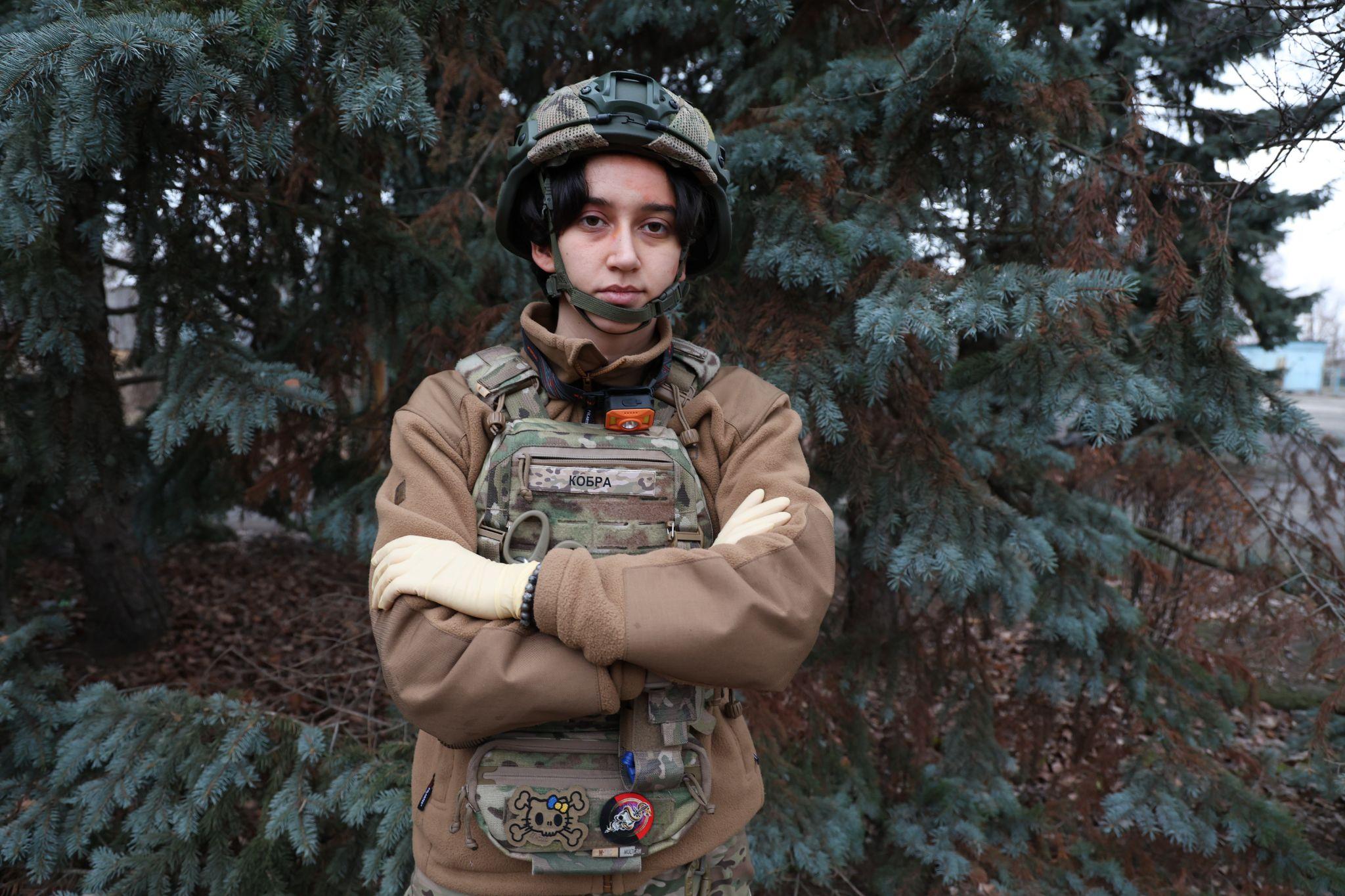
Inside Ukraine’s pioneering paramedic force
Driven by her resolve to make a real impact on the battlefield, Karolina is training to join the Hospitallers, Ukraine’s largest volunteer paramedic organization.
The 2014 Russian invasion of Ukraine highlighted a critical gap in the country’s military medical system, which was still relying on outdated Soviet-era protocols. With the Ukrainian Army slow to update its medical standards, volunteer groups like the Hospitallers stepped in, bringing Western medical practices and pushing for the creation of a professional corps of combat medics — a landmark reform that was achieved in 2017.
The Hospitallers medic battalion was founded during Russia's 2014 invasion by Yana Zinkevych, then just 19 years old. Then a paramedic volunteer, she had led over 200 soldiers to safety before a car crash left her disabled in 2015. She then, Yana continued her activism as one of Ukraine’s youngest lawmakers. In 2022, she was recognized by the BBC as one of the 100 most inspiring and influential women worldwide.
By 2024, the Hospitallers had grown into Ukraine’s largest medical battalion, with 500 volunteers and 80 crews, having conducted over 17,000 evacuations during the full-scale invasion. Operating directly on the frontlines, their crews are often the first on the scene, providing critical first aid and provides care beyond the battlefield, offering post-hospital care, and supporting the families of those affected by the war.
The organization also offers a comprehensive tactical medical course for volunteers, certifying over 300 applicants who went on to serve in the battalion or other units along the Ukrainian frontline. This has motivated many, like Karolina, to aim for a spot in the battalion and prove herself in its demanding selection process.
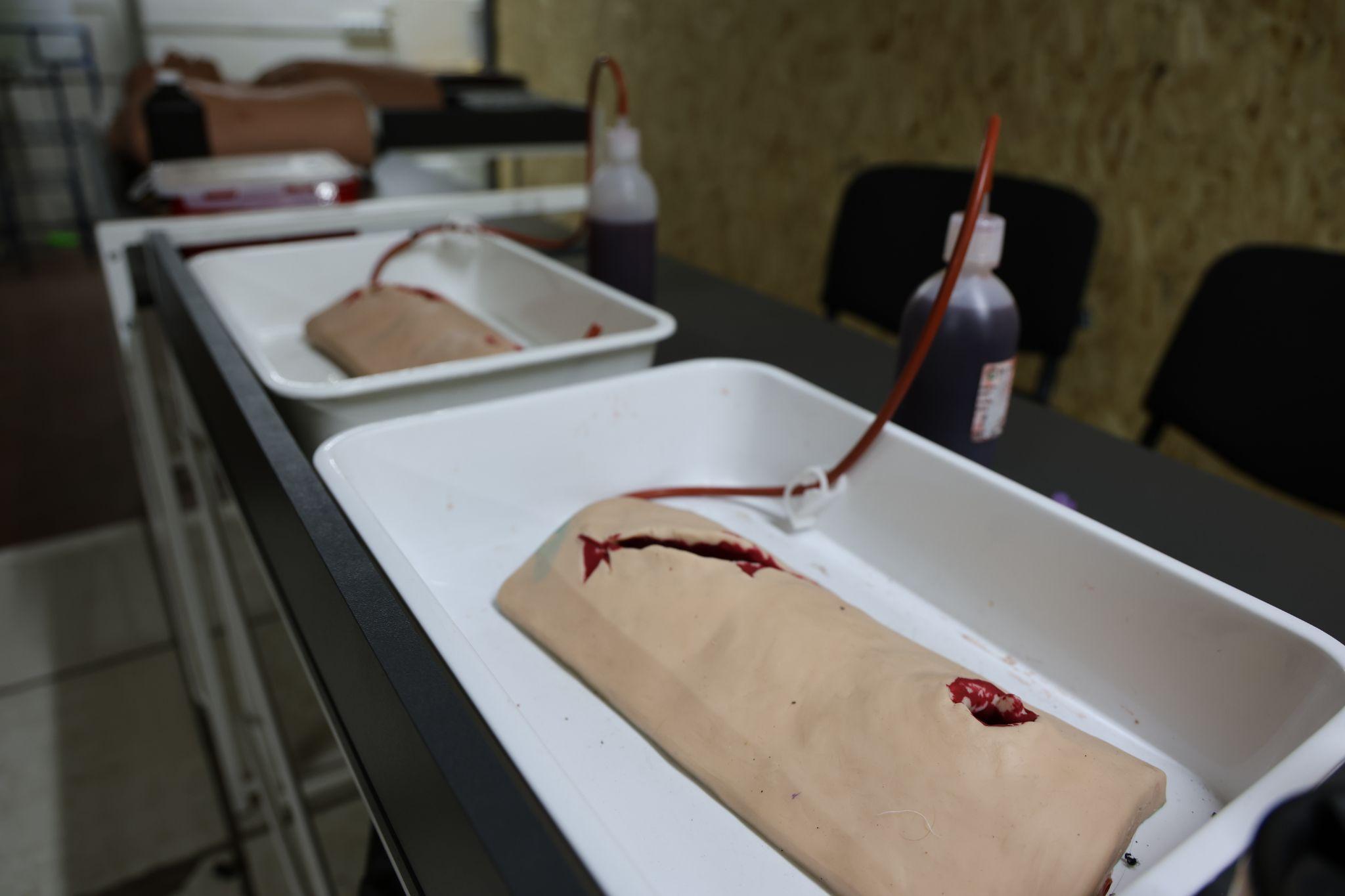
The long road to Ukraine’s elite medic corps
"I’m waiting to find out if I passed,” Karolina says after completing the two-week training course. “If I did, I’ll be able to join rotations and work with brigades on the frontlines."
The intensive training includes in-depth lectures, hands-on practice, and numerous simulation exercises. During these exercises, trainees deliver care in conditions as close to reality as possible — trenches, vehicles, and casualty collection points.
“The main difficulty is the sheer amount of material that participants need to understand, internalize, and apply in practice," says course instructor Andrii. "This includes stopping bleeding, airway management — including surgical interventions — and working with medications.”
Karolina says she’s not afraid to work in a volunteer battalion, even though it doesn’t offer the salary or government benefits, like healthcare and social support, that regular Ukrainian soldiers receive.
"We work for the sake of every life," she says. "The most important thing is to save as many lives as possible. It’s not about the money."
Despite her determination, Karolina’s journey to becoming a medic wasn’t straightforward. She attempted to join the military recruitment office twice but was rejected both times. On her first attempt in the Odesa region, a relative told her she was "too much" and should go home.
Likewise, her decision to stay in Ukraine was a difficult one for her family, who had lived in Italy for over 20 years.
"At first, they begged me to come back," she recalls. "But I told them my place is here. Now, they support me morally, psychologically, and sometimes financially."
The moment that sealed Karolina’s decision to stay in Ukraine and pursue combat medicine came in 2022, when two close friends lost their lives fighting Russia.
"One of them couldn’t be saved," Karolina says as her voice breaks slightly. "That’s when I realized I wanted to join tactical medicine — to save someone’s friend, brother, or loved one."
She acknowledges that her experience as a fixer equipped her with a unique skill set, including staying calm under fire. One of the most gut-wrenching moments she recalls was a mission from Bakhmut to Lysychansk in Donetsk Oblast.
“The road was shelled the whole way. A mortar hit about 30 meters (98.4 feet) away, and I remember thinking, ‘This is what it feels like when your life flashes before your eyes,’” she says.
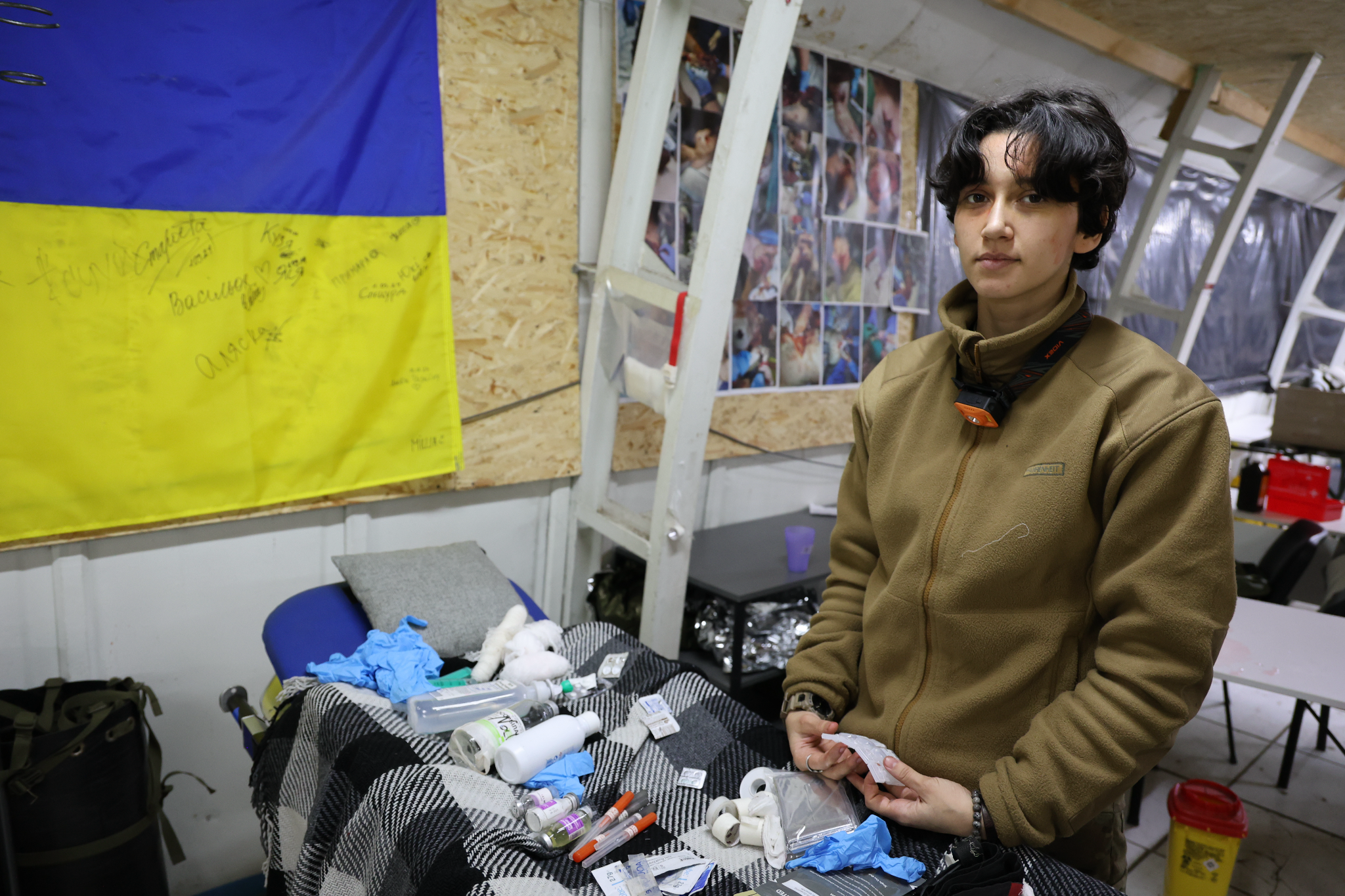
Karolina claims she’s trained herself to tell the difference between incoming and outgoing fire and knows how to respond effectively in emergencies. With this expertise, she now teaches journalists basic first aid for combat situations and admits she has little fear of what the frontline might bring.
"I’m not afraid of death," she claims. "I’m more afraid of seeing my country enslaved. I want my descendants to live in a free Ukraine, and I want my younger brother, who’s 12, to speak Ukrainian without fear."
Neither soldiers nor civilians
Unlike Karolina, who is eager to dive into combat medicine if accepted, the more seasoned volunteers of the Hospitallers manage to balance their frontline duties — typically two-week rotations — with civilian jobs that they can do remotely in between shifts.
“It’s a unique combination of freedom and responsibility,” says the battalion’s volunteer Adrii, known by his call sign “Jared.” “You can continue civilian work while dedicating yourself to this vital cause during rotations.”
Andrii joined the Hospitallers in the spring of 2023, drawn to the battalion’s well-established history and reputation, which he had been aware of long before the full-scale invasion.
“They set the standard for tactical medicine in Ukraine, and joining them became a goal for me — a way to contribute meaningfully,” says the volunteer, who now serves as an instructor for new trainees.
Andrii recalls it took a full year of training and preparation before officially joining the Hospitallers. His journey began in Germany, where he tackled basic pre-hospital care courses like Stop the Bleed and Basic Life Support, rooted in US protocols.
Returning to Ukraine, he leveled up with foundational courses and advanced training in ASM, CLS, and CMC at the Hospitallers’ Center. Determined to master pre-hospital care, Andrii also dove into independent study, making it his personal mission to be ready for the battlefield.
These efforts paid off during his first rotation. While he expected his first experience treating a patient with internal bleeding to be overwhelming, he found himself more prepared than he had anticipated.
"That was the first time I saw someone in hemorrhagic shock,” he recalls. “Still, you can adapt to the stress, and this happens relatively quickly once you begin working in tactical medicine."
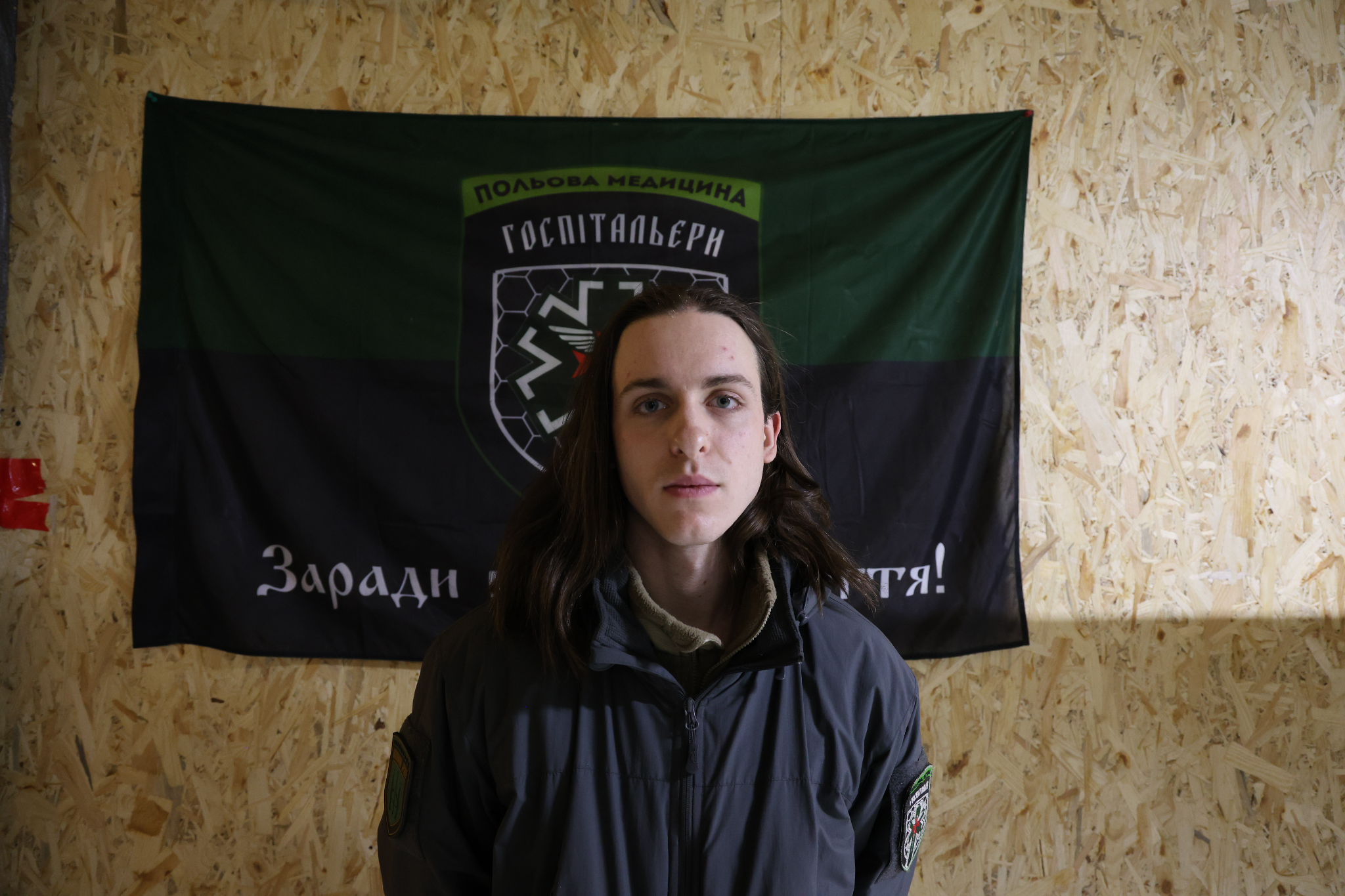
Now, with more experience and greater confidence in managing any evacuation scenario, Andrii balances his life-saving efforts with the Hospitallers alongside his role as the head of a patronage service for another NGO.
“Our service supports the wounded, the families of the fallen, and those missing in action,” he explains about his other job. “It’s remote work, which gives me the flexibility to balance both roles.”
During rotations, however, flexibility often gives way to intense, grueling schedules.
“Some days, you’re on your feet the entire time, with barely a moment to rest. Other times, you’re in a waiting mode, able to manage other tasks like training or remote work,” he says.
Despite the challenges, Andrii values the dynamic and unpredictable nature of the work, as well as the freedom to choose his missions. However, he acknowledges that this flexibility is largely tied to his physical endurance — a vital quality for volunteers tasked with evacuations, whether by stretcher or on foot.
"This requires both stamina and physical strength,” he says. “However, strong motivation helps overcome these challenges, so motivation is a must for anyone looking to complete the training."
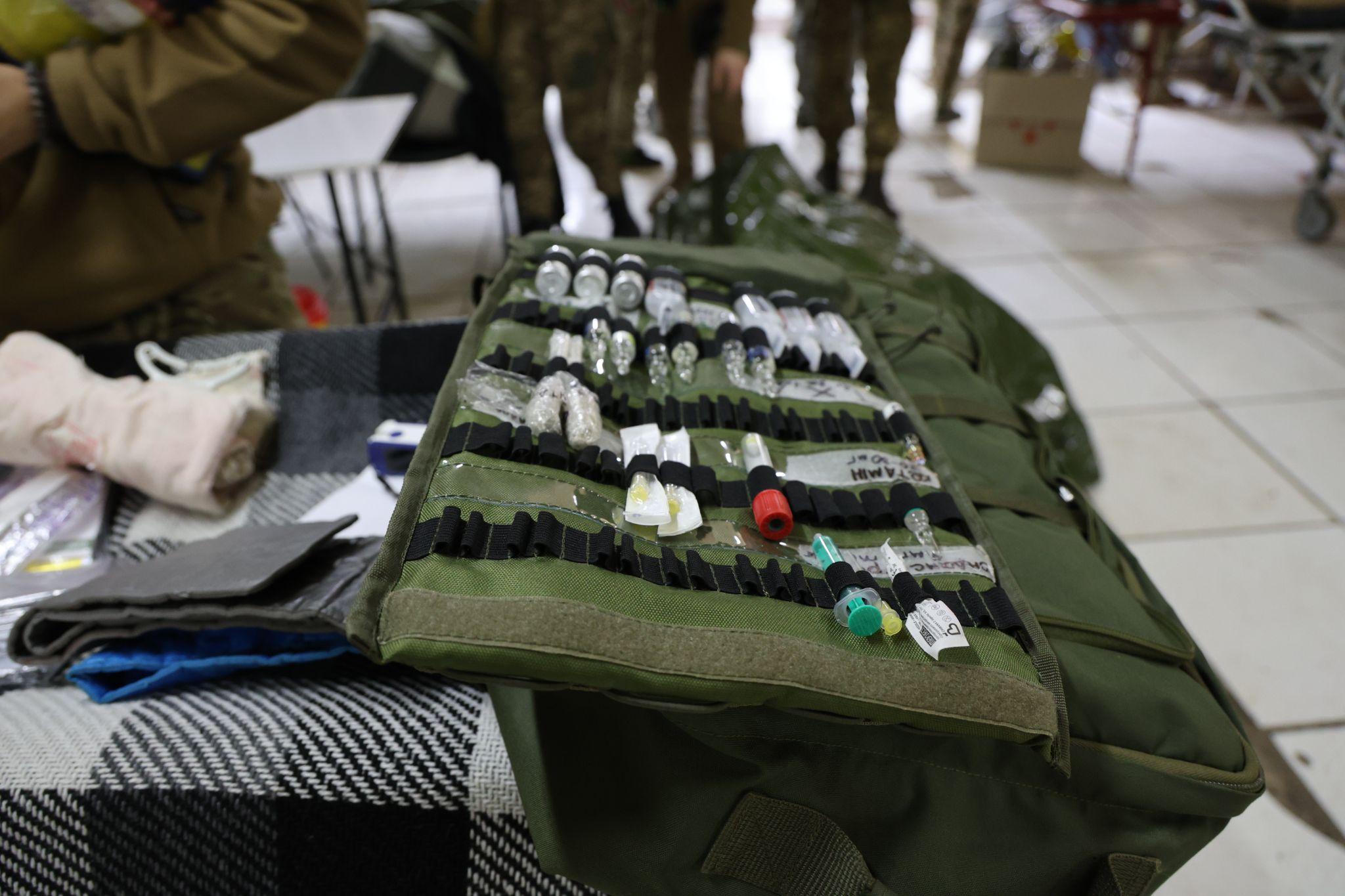
For Andrii, the primary motivation is the opportunity to save lives and pass on his knowledge to other volunteers.
“The most rewarding part is seeing the people you’ve trained out there making a difference,” he says. “It’s a reminder that every effort and lesson contributes to saving lives.”
He admits his purpose is deeply personal, and the risks of the frontline seem less daunting than the thought of giving up his grueling work.
“What scares me more is the thought of my country losing its freedom. I want my descendants to grow up in a Ukraine where they can live and speak freely,” he says.
Rewriting medicine for the first tech-driven war
Despite the determination of Hospitalliers’ volunteers to hold onto the resolve they had when they first joined, the war — and the technology driving it — has evolved. Ukrainian combat medics admit their work has become far more dangerous over time. As the war shifted into one of attrition in mid-2023, the demand to save lives only increased, placing medics in ever-riskier situations across all types of environments.
"The Kherson operation required Hospitallers to perform evacuations on and from water," Andrii explained. "This summer, our training center also started practicing water evacuations."
However, it’s evolving technology that’s driving the shift on Ukraine’s frontlines, advancing both military tactics and medical protocols side by side.
Among the factors transforming battlefield injuries, drones have had the biggest impact, vastly increasing both the frequency and precision of attacks.
“Drones have largely rewritten the rulebook on battlefield wounds: the numbers are rocketing, and the attacks are more persistent, more targeted,” the Economist noted.
During the full-scale Russian invasion — the first major war where drones became a distinct weapon — Russian troops made deliberately targeting medical evacuation vehicles one of their key strategies, making the front lines even more perilous for paramedics.
When the full-scale invasion began, being just 2–3 km (1.2–1.8 miles) from the front was considered an easy mark for drones. However, with rapid advancements in drone technology, even areas 10–15 km (6.2–9.3 miles) away from the front are now at risk.
Andrii explains that the need for electronic warfare (EW) systems during casevacs has increased significantly due to the growing threat of FPV drones.
“Russians are deliberately, actively, and systematically targeting medical transport. Our crews have been hit by FPV drones, and unfortunately, we’ve suffered losses because of it,” the paramedic says.
Evacuation procedures are now more complicated, as casevacs can’t approach the wounded without risk. To keep medical crews safe, Ukrainian medics use extra vehicles as intermediaries. But even then, getting close still poses a threat, as Russian forces often plant booby traps on the dead and wounded to target approaching Ukrainian personnel.
“Being a medic does not guarantee you any safety. Markings just identify you as a primary target. Kill the medic of a platoon, and the platoon will be bloodless,” a paramedic says.
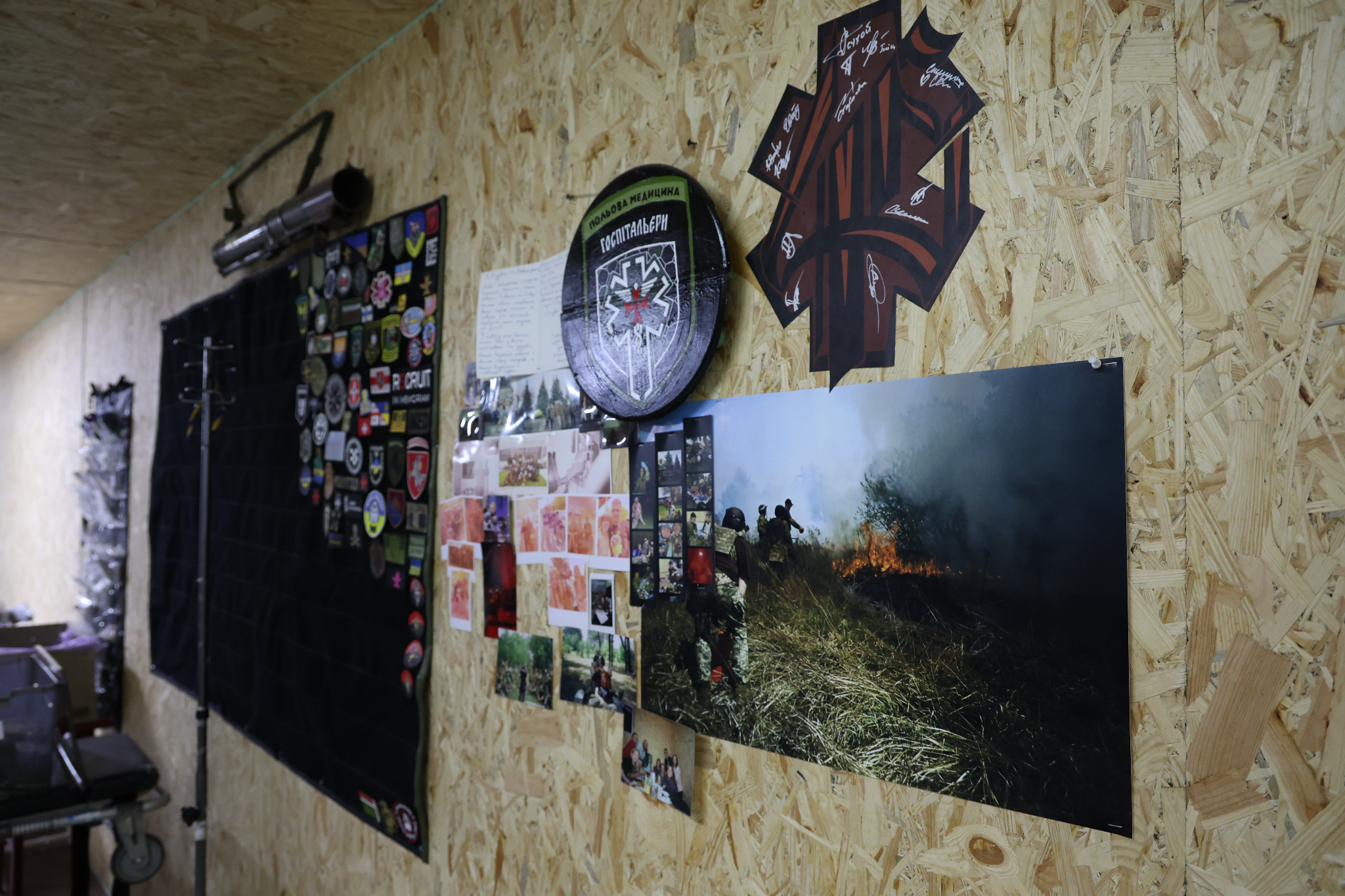
Crossing borders to save lives – at the age of 17
Despite the dangers and the volunteer-driven nature of the work, the Hospitallers continue to draw in aspiring paramedics, including international volunteers.
One such volunteer, who requested anonymity due to fears of persecution for her family in Central Asia, stood out for her dedication to the Ukrainian cause.
"I was in my home country on 24 February 2022, driving in my car, when I heard on the news that the war had begun," she says. "At that moment, it was clear that something had to be done — I had to take action.”
The volunteer explains that she first started helping Ukraine by collecting humanitarian aid in her home country but soon felt the urge to contribute more directly. At just 17 years old, she made the decision to move to Ukraine on her own, and quickly became fluent in Ukrainian.
Now aged 18, she has completed her training and is awaiting the results of her final exam to officially join the ranks of the Hospitallers.
“When you’re young, you don’t fully understand the magnitude of war,” she says. “But as I trained, I realized my role wasn’t to fight but to save. As a medic, I can provide qualified medical assistance and save lives.”
She dove into tactical medicine courses in March, mastering each one. While medicine adapts to the changing face of war, tactics, and weapons, she’s confident that the core knowledge remains unchanged.
Her training was put to the test when helped respond to a Russian bombing in a Kyiv residential area.
“I carried a nine-year-old girl with a fractured skull,” she recalls. “Her mother… she didn’t survive. That was a moment when I realized the emotional toll this work can take. But I also knew I could handle it.”
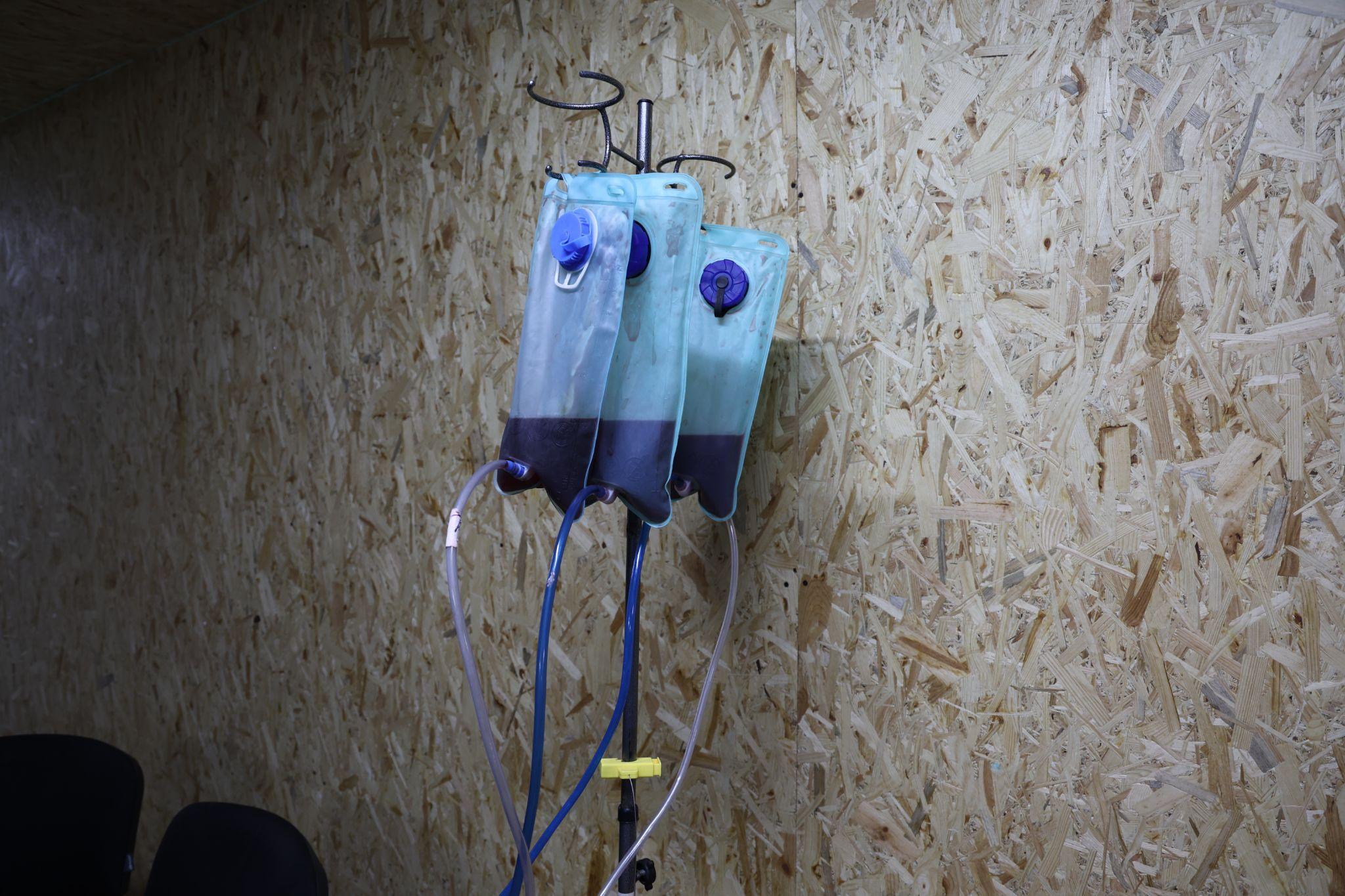
When asked if she fears death, she quotes Ukraine’s iconic 20th-century poet Vasyl Symonenko:
“It's better to burn at 20 than to smolder slowly until 40. If I don’t do something meaningful now, what’s the point?”
As she looks ahead to her future as a paramedic, the volunteer remains confident that she is exactly where she needs to be.
“The war has already taken so much, but every life we save is a victory,” she says.
Read also:
• Inside Ukraine’s kitchen drone labs halting Russia’s war advance
• Colombian soldiers trade jungle combat for Ukraine’s tech-driven war
• An entrepreneur’s journey to leading one of Ukraine’s deadliest drone units
• Chasiv Yar’s survival rests on daring night drone team

